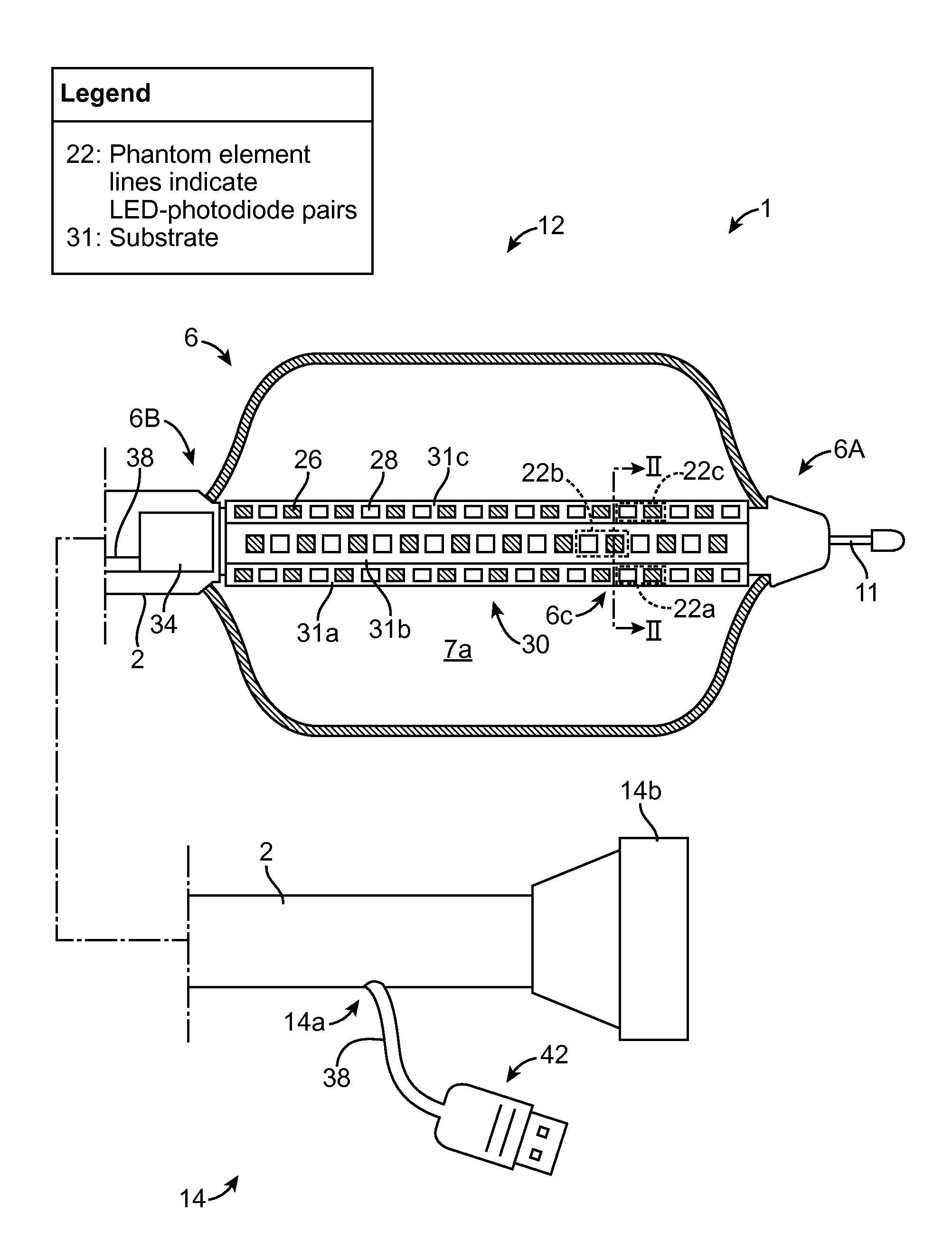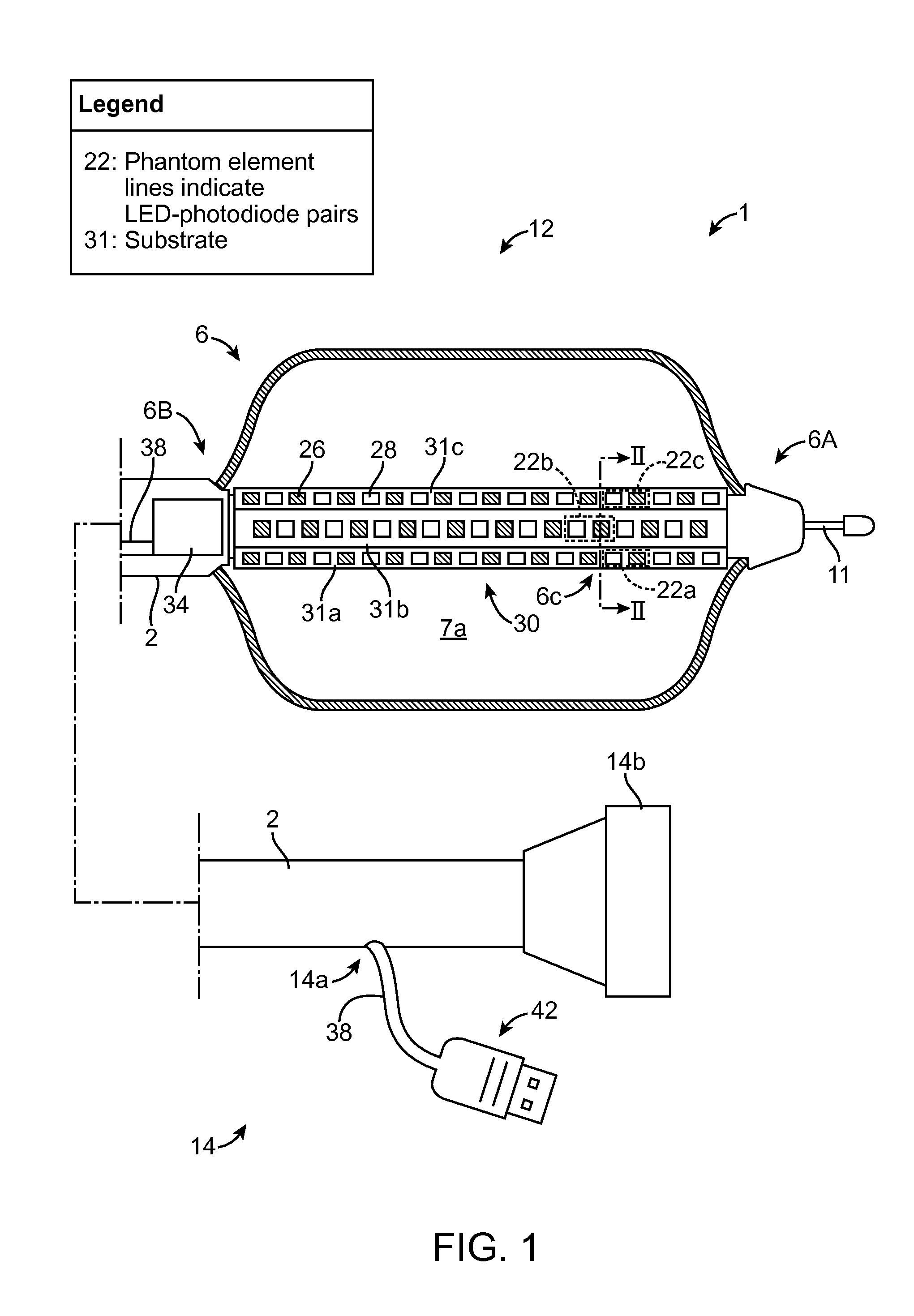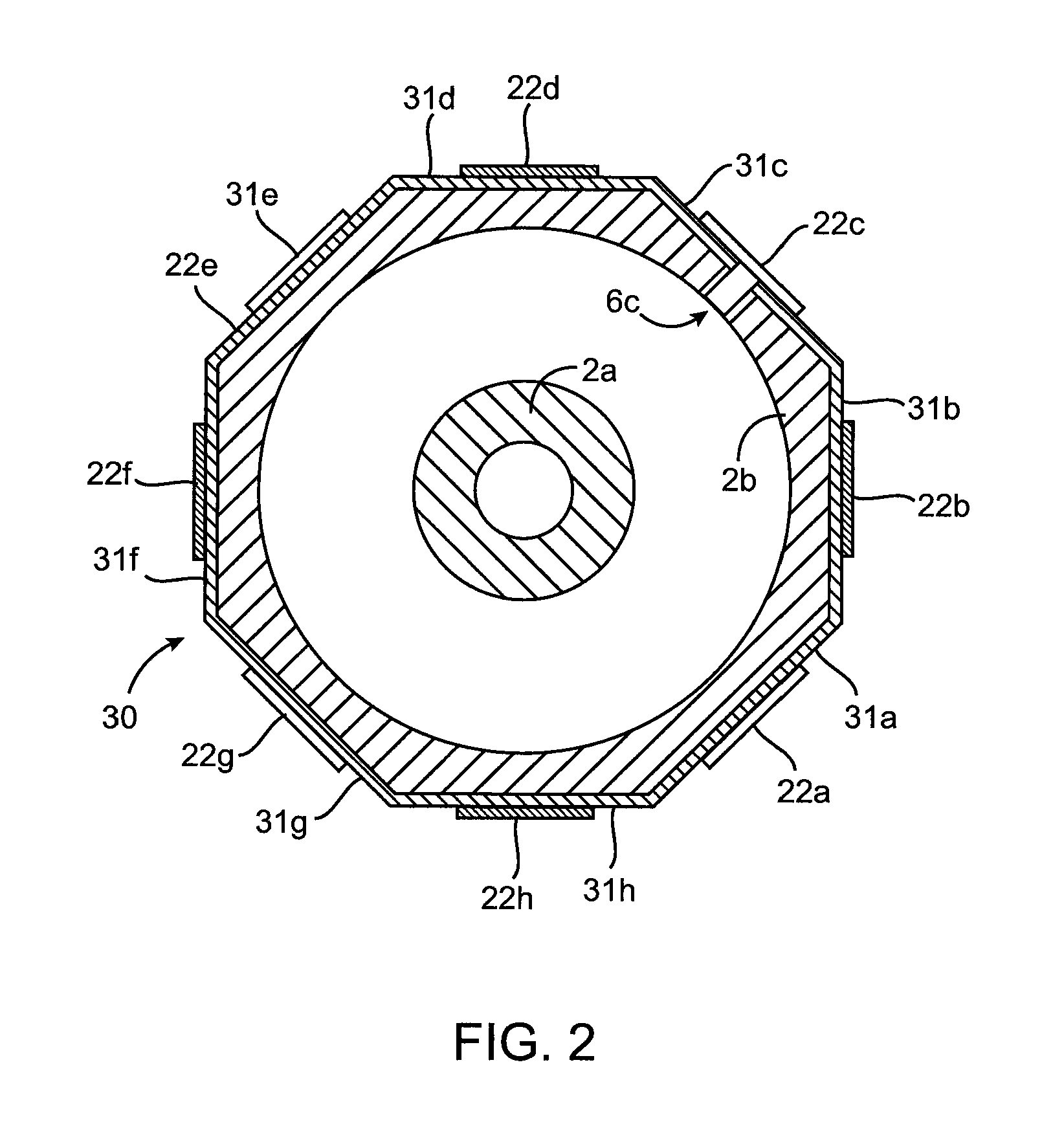Methods and devices for in vivo targeted light therapy
a targeted light therapy and in vivo technology, applied in the field of in vivo targeted light therapy, can solve the problems of over-all degradation of chemicals, achieve the effects of reducing the complexity of procedures, and reducing the potency of drugs
- Summary
- Abstract
- Description
- Claims
- Application Information
AI Technical Summary
Benefits of technology
Problems solved by technology
Method used
Image
Examples
Embodiment Construction
[0038]According to one aspect of the disclosure a catheter includes on-board electronics including an array of light-emitters and light-detectors. The electronics may be located at a distal portion such that a substantial amount of control of the light-emitters and light-detectors resides at the distal portion of the catheter. In some embodiments, the electronics are configured to provide closed-loop control of the light-emitters. In this way, the catheter may determine the desired light distribution on tissue that contains photo-degraded and / or photo-activated substances. In a preferred embodiment, the catheter's on-board electronics decide whether to turn on, or turn-off a light-emitting diode (LED) based on the differences between the magnitude of reflected light between healthy and abnormal tissue.
[0039]FIG. 1 depicts a side, partial view of a balloon catheter 1 shown in partial cross-section. FIG. 2 depicts a frontal cross-section of the catheter 1 taken at section II-II in FIG...
PUM
 Login to View More
Login to View More Abstract
Description
Claims
Application Information
 Login to View More
Login to View More - R&D
- Intellectual Property
- Life Sciences
- Materials
- Tech Scout
- Unparalleled Data Quality
- Higher Quality Content
- 60% Fewer Hallucinations
Browse by: Latest US Patents, China's latest patents, Technical Efficacy Thesaurus, Application Domain, Technology Topic, Popular Technical Reports.
© 2025 PatSnap. All rights reserved.Legal|Privacy policy|Modern Slavery Act Transparency Statement|Sitemap|About US| Contact US: help@patsnap.com



